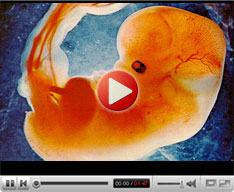
Know Infertitlity
Infertility treatments
Diagnosing InfertilityMale:
Obstetrics and Gynaecology
Infertility Treatment Services
Andrology |
USG guided aspiration of pelvic cystsOvarian cysts develop as a result of disordered ovulation where a follicle fails to release the oocyte. The cells of the follicle continue to secrete fluid and expand the follicle, which over time can develop into cysts. Ovarian cysts pretty common and occur in all age groups. There are many types of benign ovarian cysts but the most common ones include functional cysts (follicular and corpus luteum cysts), mature cystic teratomas and endometriomas. 
What symptoms do cysts lead to?Most cysts do not produce any symptoms. However in some cases, these can cause menstrual irregularities due to hormonal problems, pain during intercourse, lower back or pelvic pain that can be mid or severe and large cysts can often put pressure on other organs like the bowel or bladder. Treatment for Pelvic CystsCysts are normally left untreated and are regularly monitored via ultrasound or pelvic examination. Some functional cysts suppress sooner when a woman starts consuming the birth control pills which will also lower the risk of getting more cysts in future. However, if a cyst starts causing problems such as irregular bleeding or becomes malignant, it will either be aspirated or removed for biopsy. Commonly done treatments for pelvic cysts include:
Treating pelvic cysts using Ultrasound-guided aspirationA persistent ovarian cyst is usually removed by performing a laparoscopy or a laparotomy. However, since a majority of ovarian cysts are benign, many patients are treated using a non-surgical technique known as ultrasound guided aspiration. Ultrasound-guided cyst aspiration is a simple procedure that is ideally performed by a well trained radiologist using needle aspirations and ultrasound. Here an ultrasound probe is placed at the site of a cyst and local anesthesia that is used to numb the area. A small needle is injected directly into the cyst to withdraw excess fluid followed by the placement of warm gel and then ultrasound is used to detect the precise location of the cysts. The patient may feel a slight pinch at this time. As a result, the fluid from the cyst drains into the syringe and the cyst collapses. This collected sample may either be discarded or sent to a laboratory for analysis, depending on its appearance. There may be some slight bruising or swelling at the site and a bandage is applied on it. The cyst aspiration process takes about 15-30 minutes to complete. The advantages of ultrasound guided cyst aspiration over the laparoscopic cyst removal include low cost of treatment and lesser recovery period. What are the Pros and Cons of Ultrasound-guided aspiration?Benefits of Ultrasound-guided aspiration include:
Risks include:
|
Our TeamNews & EventsClinic LocationVideo Gallery |















